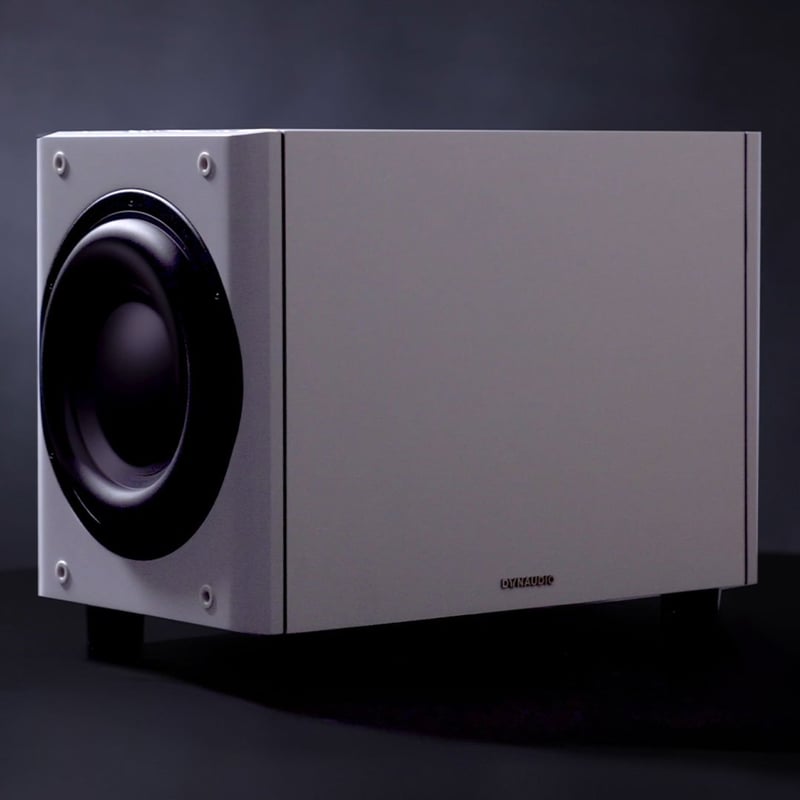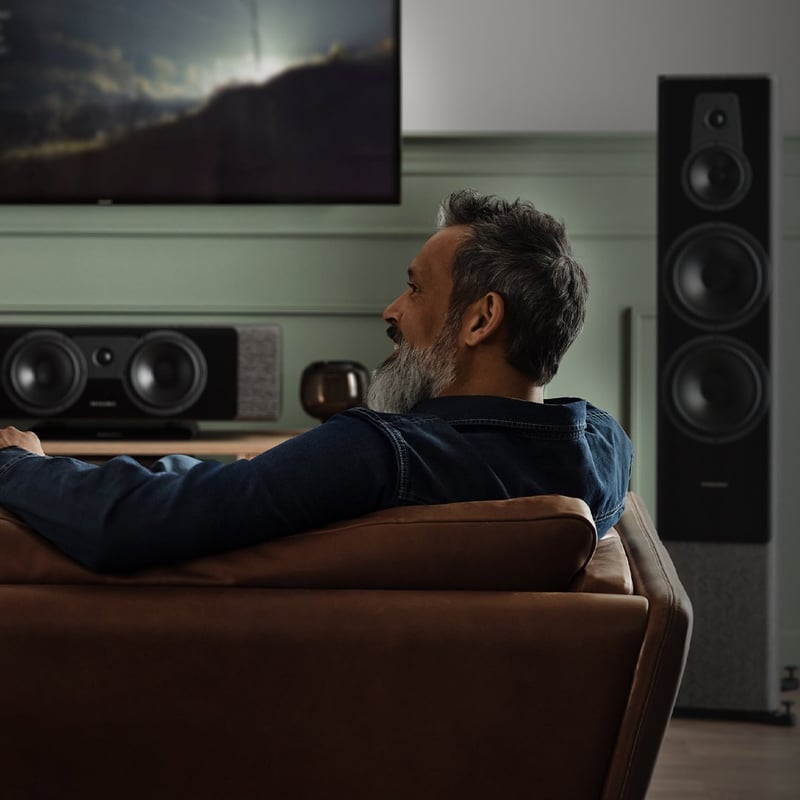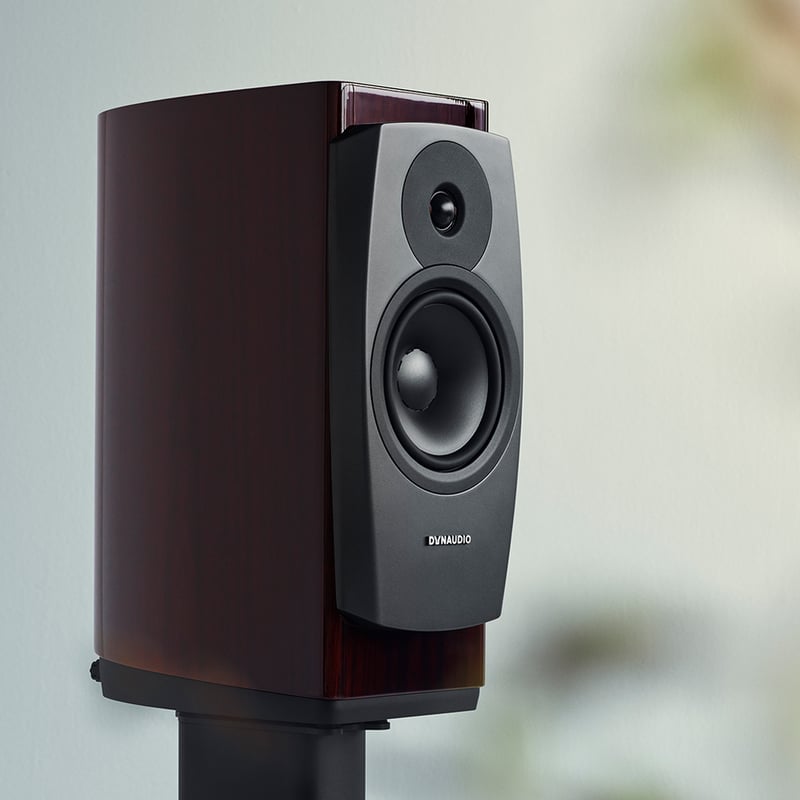Fast forward to today, and it's another story; vinyl is back in. And, it's been for some years now with records sales slowly reaching levels similar to the heydays. So, we thought it was about time to invite our vinyl-buff, Claus P. Rasmussen, inside our small studio to talk about the passion for vinyl-based Hi-Fi systems and answer your questions.
This episode's questions
Watch the entire video above or skip directly to the question you find interesting by clicking the links below:
This episode's first question comes from Tim. He wants to know if the weight of a vinyl record matters?
Staying with records, Mads asks if a remastered record is always better than the original?
Henrich asks if he can stream from his turntable to a pair of active speakers?
Why do I need a phono pre-amp and can I just plug it directly into my passive speakers? Click here to see the answer to Mohammed's question.
The next question is from Franz, who wants to know the difference between a belt-driven and direct-driven turntable.
Steve asks what's the difference between a moving coil and moving magnet system? Click here to see the answer to Steve's question.
We're at the episode's final question. And it's from Andy and Chuck: how do you match the cartridge with the tonearm?
Subscribe now: Ask The Expert on YouTube
More tips and tricks
If you're looking for more vinyl and turntable tips, Claus suggests watching these videos.
Michael Fremer's video on the wonders of vinyl or this video on collecting vinyl records.
Also, if you want to revisit the topic of setting a turntable up, Claus recommends Michael Fremer's turntable setup seminar from AXPONA in 2014.
Thank you!
We want to thank all of you who posted questions on our Facebook posts. We didn't have a chance to answer all of your questions, but we'll keep them in reserve - just in case.
Subscribe now: Ask The Expert on YouTube
If you have any more questions, please share them with us - and the rest of our community - on our Facebook page, in the comment section on YouTube or send us an E-Mail with your question.
All the best,
Claus and Christopher
Oh, you want more Ask the Expert?
Now that's something we can help you with!
You are not sure about what Digital Signal Processing is? Not to worry, in this episode, Jan Abildgaard Pedersen gets technical about and explains it in detail. Click here to see him pull out the whiteboard.
A loudspeaker is more than just 'one' part. Several things have to come together. Just as Roland said. In this episode, Andreas Eberhardt Sørensen talks about the same thing, but from a loudspeaker driver point of view.
Don't know how to clean your loudspeakers? No problem. Watch as Otto Jørgensen talks about some of the most common cleaning questions we get.
Transcript
Christopher Kjærulff, Content Manager: Hello and welcome to Ask the Expert. My name is Christopher and I'm your host. Today, we've been fortunate enough to have Claus with us. And Claus, you are a bit of a vinyl-buff. Can you talk a little bit about it?
Claus P. Rasmussen, CCO: Well Christopher, pleasure to be here. My job at Dynaudio is Chief Commercial Officer. So, I have the overall commercial responsibility for our global markets in all the segments that we operate in. I've been a music-buff since birth and a hi-fi enthusiast probably since I was thirteen.
Christopher: That's a lot of years
Claus: That's a long time. I've always been in this industry. For, you know, a very long time and I'm here by choice. I love what we do here and I love the industry in general. And yeah, my passion for vinyl has been going on for more years than I would care to mention here, yes.
Christopher: But, that's good because that's what we're going to talk about today. So, should we just jump into the questions?
Claus: Absolutely. Let's do it.
Christopher: Claus, our first question is from Tim Werner. And, Tim has been noticing that on a lot of records it says how much of they weigh. He has paid special attention to the ones that weigh 180 grams and he asks: "Does the heavier record, does it matter it's heavier?"
Claus: Well, first of all, it is obviously lovely for us record lovers to see so many titles being released on vinyl now. Both new titles from young artists, old artists and also a lot of old titles being re-released now. So, times are great.
The 180 gram sort of sticker that you see on a lot of covers has become a bit of a marketing point. A 180 gram is definitely heavier than your average record which will probably be around 120 - 130 gram. But, it's important not to take that particular thing out of context. What really matters in the quality of a record is the quality of the recording itself, it's the quality of the mastering job, it's the purity of the vinyl, it’s if the vinyl is really flat and has no warp, and is it very well centred - meaning is the hole exactly in the middle. All of those things have a big influence on the overall final sound quality.
You could argue a 180 gram record is a bit more stable; it creates perhaps a more stable platform for when the cartridge is reading the musical information in the groove. On the other hand, you could also argue that a heavier record perhaps will store the vibrational energy for longer. Remember, the cartridge is vibrating when it's reading the musical information in the groove and it's that vibration that's turned into an electric signal but when the cartridge is doing that it's also sending vibration into the record which is not a good thing.
Christopher: So, there's obviously both good and bad thing about it.
Claus: Yeah, yeah two sides to every story.
Christopher: What I hear you say is that you can't use it as an isolated factor for deciding if it's a good record or not, a quality record?
Claus: That's exactly it. I mean we see that a lot in in the audio industry. Everyone who's very keen to put together a very good system and people that really like without CDs or records that there's a tendency to stare yourself blind on just one single parameter or factor or take one issue and blow it up and sort of take it out of context. The truth is that there are so many factors that influence that the final sound quality and it really is important that you don't just focus on one little thing but that you look at the big picture.
And getting back to the record weight again, there are arguments for and against and you'll be you're the best judge of evaluating the quality of a record. Especially, if you have the opportunity to compare one pressing to another.
Christopher: So, if we are to give, Tim, like an answer to this it's more about you know actually bringing it home listening to it comparing to another sample or?
Claus: Yeah, and if you’re really into your sound quality if you have the opportunity to maybe read a review where that particular pressing is compared to another pressing that was made at the same time or perhaps much then see how it's being compared to the original pressing of that same recording.
Christopher: Okay, thanks.
Christopher: These days, Claus, there's a lot of remastering being done whether it's on LPs or if it's in the digital domain and Mads Kok; he's noticed this and he asks: “Is the remastered record always better than the original one?”
Claus: Remastering has clearly become a bit of a marketing gimmick and it gives record companies an opportunity to release the same musical content again and again and again and remaster it and remaster it and remaster it.
A remastering job you cannot really say that it's better worse: it really depends on the quality of the original mastering. As well as the quality of the job that's been done again. Mastering is about taking the musical content that has been through the mixing process and preparing it for whatever format it's being put on. We've certainly seen certain technological advancements in you know in studios and the whole process and the quality of equipment but at the end of the day it comes down to the skill set and the opinions and the ears of that particular engineer who's doing the mastering.
I have certainly seen many examples where I find that the remastering is quite horrible and I much, much prefer the original. Now and then I experience a remastering job where I can hear that in my view it's a vast improvement on the original job so again unfortunately perhaps the answer is really not that clear it you have to evaluate yourself. And, if you have the opportunity to compare an LP that has been remastered to the original LP that will give you a very clear answer: “Do you think it sounds better or not?”
Christopher: Yeah, it's yes or no.
Claus: Yes or no. Ultimately you have to decide whether it's a quality improvement to you or not.
Christopher: And, as you said it's about the complete picture and I guess if you like a certain engineer - the way that he masters a record - you might think that it's a better remastering and if you don't like him you think it's worse so there's also an aspect of personal opinion.
Claus: Yeah, you do have us vinyl purists and music lovers some of us will actually pay attention to the name of who's done the mastering. I'm almost embarrassed to say it's not something that has been too much time on but if you really get into comparing especially with very old recordings as something as being re-released who is doing that we're mastering and there are certain individuals in the business that have a very good reputation for taking old original recordings and actually making them sound better than they've ever done and that's oh that's a wonderful thing but it's not the general rule.
Christopher: Okay, perfect.
Christopher: Henrich Kruse. He's heard that some are against digitizing a vinyl-system. But, he actually still wants to have a vinyl system with a streaming possibility so he can stream to a pair of active speakers. Is that possible?
Claus: It is possible as long as your streaming device will accept an analogue input then what you need to make sure of is that you have a phono pre-amp that will amplify the signal from the cartridge which requires very powerful and a special amplification and you hook that up to your streaming device that accepts an analogue input and then off you go.
It's perhaps a little bit unusual combining the playback of a record process with streaming but it can be done and if that's your thing and if that's what you want to do to get maximum enjoyment out of your music and listen to more music then I would strongly recommend it.
For us vinyl purists, we're generally against digitizing an analogue signal but what we sometimes forget is that whether we like it or not a lot of recordings today or the majority of recordings today are actually made in the digital domain and then it's converted and then you have an LP and then you have the sound and the analogue format but the original recording was made in the digital domain. I think it's important not to get religious about it but for people that are really into high-quality LP playback like myself... Yeah, we probably would not do it certainly not when we do our active listening.
Christopher: But, it is possible it's a phono pre-amp, a streaming device that accepts an analogue input, and off you go.
Claus: Correct.
Christopher: Perfect.
Christopher: The next question is from Mohammed Saleh. And, Mohammed, he asks: Why do I need a phono pre-amp?
Claus: Two things are unique about the signal from your cartridge 1) is that the signal is very weak it therefore requires extra amplification. That amplification needs to be very high-quality because you want to keep the noise at an absolute minimum the signal from a cartridge is far weaker than the signal from the CD player for instance.
The other unique thing is that when you make records this signal is equalized in order to allow for long playing time and to minimize the surface noise. You actually weaken the base notes and you boost the treble - roughly speaking – so when you amplify it you obviously need to apply it in reverse in order to get that signal that's linear. That's the reason why you simply cannot take your turntable and hook it straight into any kind of amplifier you need to make sure that either you have a separate phono pre-amp or that you have that phono amplification built into your pre-amplifier or integrated amplifier.
Christopher: So, when I've taken care of the phono stage is it then just about plugging it directly into my passive speakers?
Claus: That, yes, well you plug the phono pre-amp into your pre-amp or your integrated amplifier you would still need your conventional amplification because you need the volume control.
Christopher: And, if I haven't... What if I have an active system?
Claus: Well, then it should also be possible but here I have to say something that you should try out first as it depends on how powerful the signal is coming out of your phono pre-amp if that in itself is powerful enough to feed your active speakers. Then job done. But you would have to try it out first. But, it would certainly make for a very easy system to set up and enjoy.
Christopher: But with active speakers just make sure to try out beforehand.
Claus: Yes, you need to do a little bit of investigation first and find out whether the phono pre-amp is sort of up for the job of feeding the active speakers directly.
Christopher: Perfect.
Christopher: Franz Umber asks what's the difference between a belt drive, and a direct drive turntable?
Claus: A turntable consists fundamentally of three parts the deck itself, a tonearm and a cartridge. And the whole purpose of the playback system is really to protect the cartridge and make sure that the cartridge has the best possible working conditions.
Now, the deck itself you can mount the platter directly on a motor that would be a direct drive principle that will give you great speed accuracy and the platter will start up very quickly but the challenge is to eliminate vibrations from the motor and any motor will have vibrations. The challenge is to prevent those vibrations from entering the platter and then into the record itself because you don't want to pollute the signal that the cartridge is reading in the record you want that to only be the musical information, not vibrations coming from the external environment or the motor.
The belt driven principle well here you mount the platter on a bearing and then you have the motor next to the bearing sometimes very close sometimes not so close and you connect the two with a belt. Now what that will give you is a usually a much better way of eliminating vibrations from the motor entering the platter itself and then going into the record but it's a little bit more difficult to achieve the same type of speed accuracy.
Christopher: Okay, so, is there anywhere where you would use one instead of the other?
Claus: Well, direct driven turntables you always find in you know the DJ environment for obvious reasons: it's very robust and the record will start up immediately and they can do their thing with scratching and what have you. That's simply impossible to do...
Christopher: You wouldn't do that in a Hi-Fi setting?
Claus: No, no, no that's impossible. Most high-performance turntables in fact the vast majority of high-performance turntables for Hi-Fi use are based on a belt driven principle.
Christopher: To eliminate all of the vibrations and give the best sound quality?
Claus: Yes, yes.
Christopher: Thank you.
Christopher: Claus, the next question is from Steve Wodell and he asks if you can describe the differences between a moving magnet and a moving coil?
Claus: So, in a moving magnet cartridge you have two magnets placed at the end of the stylus. One magnet for each channel and as the stylus vibrates these magnets move and they're positioned in relation to a coil and that is what is generating an electrical signal.
In a moving coil cartridge, it's sort of the opposite you place two coils at the end of the stylus and they are positioned in relation to a magnet now both the coils and the magnets regardless of the principle are obviously positioned inside the cartridge itself.
Christopher: Does either one have any benefits or advantages compared to the other?
Claus: Well, in a moving magnet cartridge you tend to get a more powerful electrical signal compared to a moving coil cartridge and all things being equal you could also argue that it's a more affordable way of making a cartridge and I'm generalizing things a bit here but that is the general principle.
A moving coil cartridge, well because the coils are lighter than magnets and the coils are sitting at the end of the stylus you could argue that a moving coil cartridge will allow for better tracking of the record groove and so you get all the finer details. The downside is that you have a significantly weaker electrical signal and that requires a more powerful amplification afterwards.
Christopher: So, you would have to pay attention to especially your amplification stage if you go for the moving coil?
Claus: Yes, you have slightly different amplification for a moving coil compared to a moving magnet and you need to make sure that your phono pre-amp has that capability. I have to say all quality phono pre-amps will have that capability but nevertheless, that's something you need to look out for.
Christopher: Perfect.
Christopher: Claus, we've come to the final question and it's from Andy and Chuck and they wanted to know how to match the cartridge with the tonearm?
Claus: It's a good question. The cartridge needs to match the tonearm and the tonearm needs to match the deck. When matched, when you hook up a cartridge to a tonearm, it will always resonate at a particular frequency what frequency is quite important when a cartridge is in the groove it in a way functions as a spring because it's reading and vibrating both vertically and horizontally.
How soft or hard that spring is to put it in sort of layman terms and the effective mass of the tonearm which basically acts as a weight that will determine the frequency where the playback system will have that resonance and that is a little bit critical and usually you would say if it falls between nine and 14Hz... You're sort of okay.
Now, it is possible to go in and actually read that information get the necessary data when you read the specifications of the cartridge and also the tonearm and you can calculate exactly what that resonance frequency is but it is an area where I would say unless you're really experienced in these matters I would trust a qualified dealer and also as with everything in audio you also need to trust your own ears.
Christopher: You said something about it has to be within a certain frequency range what happens if it falls outside?
Claus: It creates potential problems, it doesn't necessarily create actual problems, it creates potential problems. Let me give you an example if you have a record that's warped now that warp in itself that will be at a very low frequency. Then, if you have a cartridge-tonearm combination that also resonates at a very low frequency it will be boosted. That's very unfortunate, as it would affect the tracking of the record and you want that record to be, you know, tracked the best way possible.
Christopher: So, it would be very audible or?
Claus: Could be. But as I said it will create a set of potential problems not necessarily actual problems and so the guideline is that if it falls between let's say nine and 14 there will be general agreement that that is the best place so but you need to know the compliance of the cartridge, the weight of the cartridge, and the effective mass of the tonearm
Christopher: Okay and as you said if you really you want to be extremely sure you can calculate it...
Claus: You can calculate these, these things yourself and I would refer to some excellent articles that you can find on the internet if you really want to get into detail if that seems a little bit intimidating you know go to a good dealer and trust the advice that you get from the dealer.
Christopher: They can help.
Claus: Yeah, they can help.
Christopher: Perfect.
Christopher: Claus, that was the final question. We're done.
Claus: Thank you, thank you very much for inviting me I enjoyed that and I have a very important message here to you ladies and gentlemen and boys and girls go out and buy some vinyl it's a wonderful thing to own and enjoy.
I'm spending far too much of my disposable income on these things I'm not sure I would advise you to do exactly just that but it's a wonderful way of enjoying your music.
Christopher: I guess we could say that you're pretty happy that it's back 'in'.
Claus: I am very happy that it's back 'in'... My bank manager is not.
Christopher: That's it for this time guys. Thank you so much.
Sign up to get more great articles
Nothing compares to the satisfaction of knowing – for a fact – that something is as good as it gets





